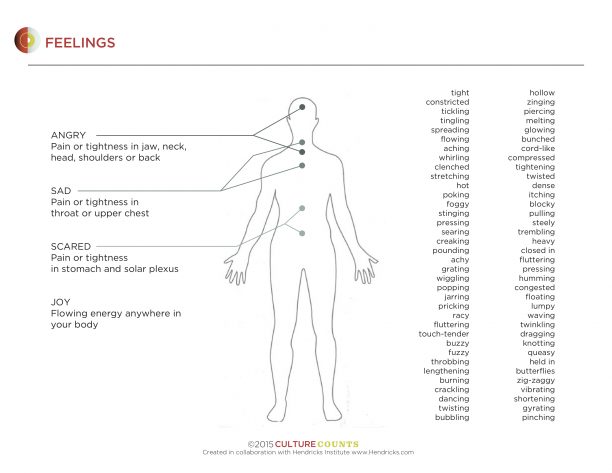October 29, 2016
How to Access Your Feelings at Work
Picture a recent time at work where you were emotionally triggered by something, whether it was a confrontational conversation with an employee, or a feeling of anger with your manager. Maybe the confrontation was with yourself, where you judged yourself or got angry at yourself for a decision (or non-decision) that you made. When you had those experiences, what did you do with your feelings?
For most of us, the mechanisms that we have for dealing with feelings at work consist of avoiding them, compartmentalizing them, venting them to a co-worker, or saving them to bring home to our families.
“The emotions are there whether people acknowledge them or not,” says Culture Counts coach Sarah White Carr. “Most of us try to get the work done and ignore the feelings, which really puts a lot of pressure on people and things don’t get done. The drama that people talk about at work, the inefficiency…a lot of that has to do with not owning and not acknowledging feelings.”
But as it turns out, there are some useful ways to acknowledge our feelings, and doing so creates an easier, more productive work environment where people feel heard and valued.
“When ourselves or our client can express what they’re actually feeling, they are able to actually get things done,” says Sarah. Expressing our feelings allows our energy around them to be freed up and be put to use for more productive and creative things.
However, most of us have had very little education about how to access how we feel, or how to cleanly express them. Even when we throw around words like “ overwhelmed,” “upset,” or “frustrated,” it’s hard for us to separate our feelings from our thoughts and what’s actually happening around us.
Like primary colors, our feelings are derived from a few basic building blocks. The four main types of feelings are:
- Anger
- Sadness
- Fear
- Joy

Anger usually shows up as tension in your jaw, neck, head, shoulders, and back. These parts on the body can feel tight, clinched, contracted, and constricted when we get angry. Sadness manifests itself as a heavy, achy pain in your upper throat and chest. When we are afraid our body shows fear as tightness or pain in the stomach and solar plexus; this can cause feelings of topsy-turvy waves or hundreds of butterflies knocking against our inner stomach wall. Joy causes a tingly or “bubbly” sensation all over the body, with a feeling of flowing, humming energy all across the skin.
Give this a try. The next time you’re in a situation where things aren’t running smoothly, take a second to focus on the parts of the body where you feel the strongest physical sensation. Watch what happens when you label the emotion and deal with it by going back to what you were working on, and feel the difference as you befriend your feelings at work.



